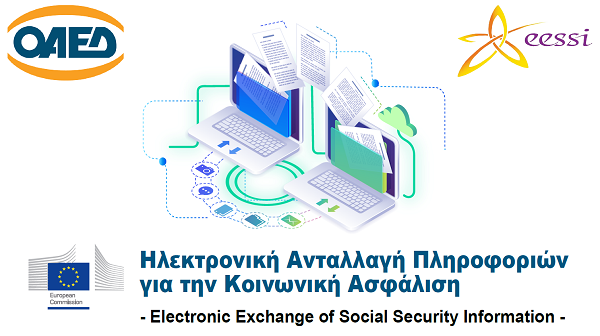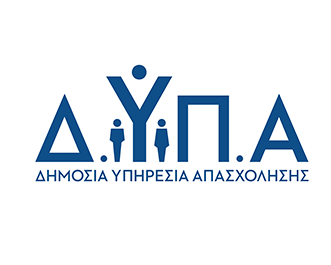OAED-EESSI: Electronic exchange of Social Security information among EU countries

The processing of requests for the subsidies granted by the Manpower Employment Organisation will be faster and more direct with the Organization's inclusion in the "European System for Electronic Information Exchange (EESSI)".
- What it is:
EESSI is an information system for the exchange of Social Security information that aims to interconnect of the Social Security Agencies (SSAs) of the EU Member States as well as Iceland, Norway, Liechtenstein and Switzerland.The EESSI system has been developed by the European Commission, through European and national project governance bodies, for the coordination of national Social Security systems. EESSI is a system that is expected to operate, at least at central level, 24 hours a day and 7 days a week.
- What it ensures:
The EESSI system will ensure the exchange of data between entities, electronically under a common security framework, which can guarantee the confidentiality and protection of the data exchanged, applying the European Regulations on the Coordination of Social Security Systems.
- This electronic interface will contribute to the improvement of:
The exchanges through the Social Security Agencies of each Member State of the European Union which will be carried out electronically (replacing the current exchanges which are mainly based on documents)
To the fastest handling for data exchange and decision-making process between agencies
To the more efficient verification of the data exchanged and
To the guaranteed confidentiality and protection of the data exchanged, applying the latest European Regulations for the coordination of the Social Security Systems.
- The system will include:
Unemployment subsidies
Family subsidies
Maternity and paternity subsidies
- Who it concerns:
Nationals of the Member States
Third-Country Citizens legally residing on the territory of a Member State in the EU Territory
Protected members of their families
Architecture of the EESSI system
as part of providing support services to the insurance institutions of the Member States, the European Commission created the necessary common infrastructure for the operation of the EESSI system. Specifically, it developed:
- the Central Service Node (CSN)
- the software for the Institution Repository (IR)
- software for Access Points (APs).
It has also contributed to the development of the Reference Implementation for a National Application (RINA) through which end users can access in the EESSI system. The countries involved, if they wish so, have the right to develop, instead of RINA, their own national implementation which must, however, comply with the minimum standards of interoperability between all modules of the EESSI system defined by European Commission. The Manpower Employment Organisation uses the RINA Application.
Also, the Administrative Commission has set common system structure rules and common request management procedures, creating for the exchange of information Business Use Cases (BUCs) that define the flow of the relevant procedures and "Structured Electronic Documents" (SEDs), which are electronic document standards for the exchange of information between countries. End users access the EESSI system through the RINA application. Messages sent by the end user are transferred to a national Access Point (AP), which communicates with the corresponding Access Points (AP) in the destination countries. The messages will then be forwarded to the end-users of FKAs in the destination countries. A central infrastructure of the European Commission (Central Service Node - CSN) provides all Access Points with the necessary information for the routing of messages.
The technical characteristics of the system
The EESSI system consists of two main sectors:
- The International sector which contains common parts for all Member States and which is divided into two sub-sectors:
The EESSI Central Node (CSN)
The Access Points (AP)
The elements of CSNs and APs are connected electronically as parts of a system and constitute the EESSI Central System.
- The National Domain which hosts the National Systems and which is also divided into two subdomains:
The National Access Services (NAS), which are systems that support the execution of functions such as archiving, anti-malware applications, monitoring, auditing routes and reports.
The final systems of the national Social Security bodies with their end users.
Also, the participating states have the possibility to develop a National Gateway (NG) as an optional system which can be used to perform functions such as the transformation of messages from national to international format, the bridging of national and international communication protocols and intelligent message routing.




















